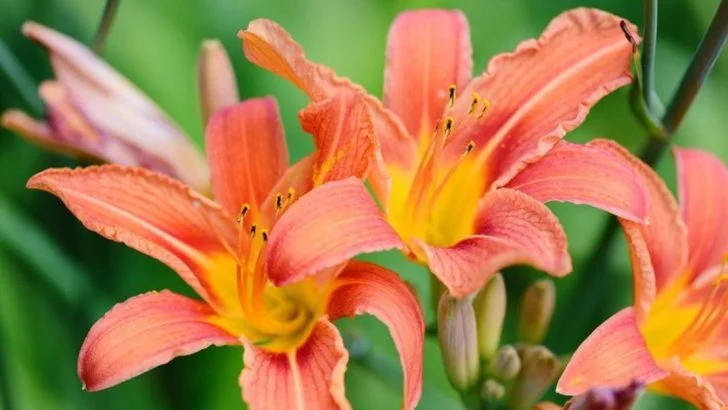Not every garden is manicured—and that’s perfectly okay. In fact, some flowers actually flourish in the wild beauty of cluttered, overgrown spaces, where dense growth and natural layering provide ideal microclimates for resilient, shade-tolerant blooms.
From the carefree sprawl of nasturtiums and cosmos to the woodland charm of foxgloves, columbines, and Japanese anemones, these plants not only tolerate a little chaos—they thrive in it. Many self-seed, spread easily, and offer long-lasting color with minimal intervention, making them perfect for relaxed gardeners or those embracing a more naturalistic aesthetic.
Discover these 18 hardy blooms that don’t just survive in tangled, layered gardens—they make them burst with life and color.
Daylilies
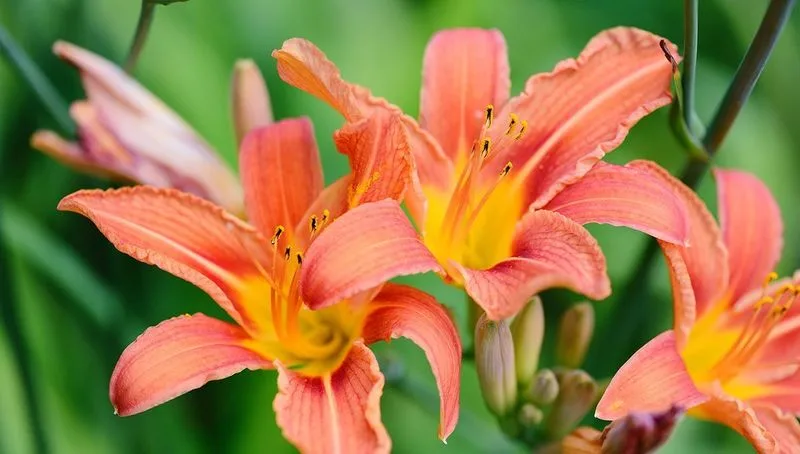
Known for their dynamic colors, daylilies are the stars of any chaotic garden scene. Their trumpet-shaped blooms burst forth in a riot of reds, yellows, and oranges, fearlessly standing out among the greenery. These hardy perennials require minimal care and thrive in full sun or partial shade, adapting well to overcrowded spaces.
Daylilies are not only beautiful but also edible, adding a culinary twist to their appeal. Consider planting them along pathways or borders for a striking visual effect. With each blossom lasting just a day, they continuously renew themselves, ensuring a lively display throughout the growing season.
Black-Eyed Susans

These cheerful, daisy-like flowers bring sunshine to even the most untidy patches. With bright yellow petals surrounding a dark center, Black-Eyed Susans are a symbol of resilience and optimism. They flourish in various conditions, from full sun to part shade, making them perfect for neglected spots.
Their easygoing nature allows them to self-seed, gradually filling spaces with their sunny disposition. Plant them in clusters for a natural meadow feel or mix them with grasses for a prairie-style look. As a bonus, they attract pollinators, enhancing the biodiversity of your garden.
Purple Coneflowers
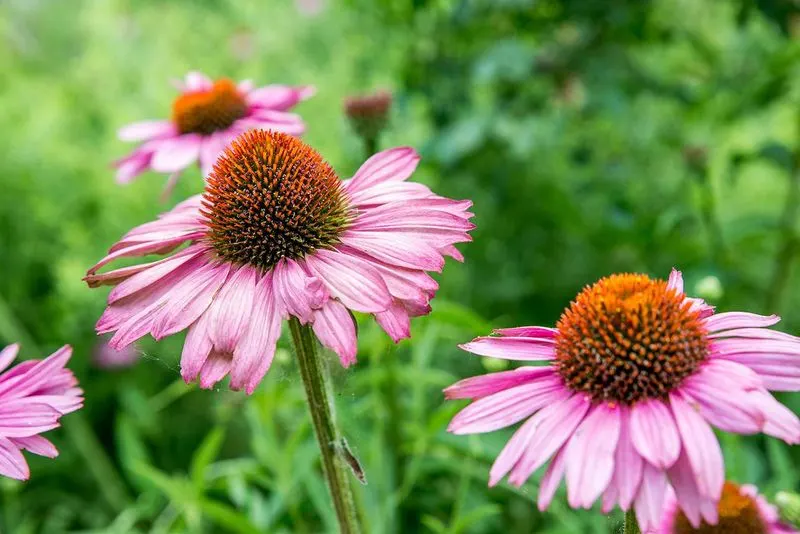
Purple coneflowers, with their striking pinkish-purple petals and spiky central cones, add an architectural element to overgrown gardens. These hardy perennials are drought-tolerant and thrive in sunny, well-drained areas.
Their tall, sturdy stems make them excellent companions to ornamental grasses or wildflowers, creating a naturalistic landscape. Beyond their visual appeal, coneflowers are known for their medicinal properties, often used in teas and remedies. They are a favorite among bees and butterflies, making them a vital addition to any wildlife-friendly garden.
Hostas
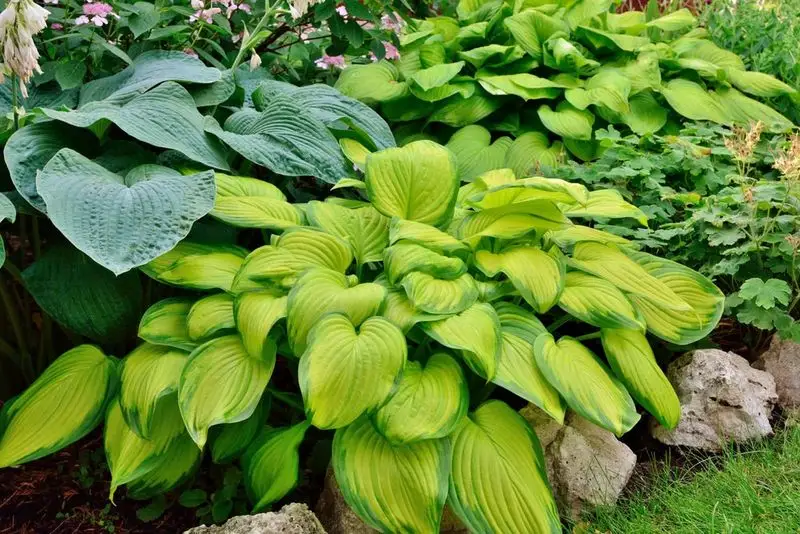
In the shadowy corners of your garden, hostas quietly unfurl their broad, lush leaves. Known for their foliage rather than flowers, hostas come in various shades of green, blue, and gold, offering a calming contrast to more vibrant blooms.
These perennials are shade-tolerant and thrive in moist, well-drained soil, making them ideal for tucked-away areas. While they occasionally produce delicate lavender flowers, it’s their leaves that steal the show. Hostas are perfect for creating a peaceful, woodland feel, turning neglected spaces into serene retreats.
Wild Roses
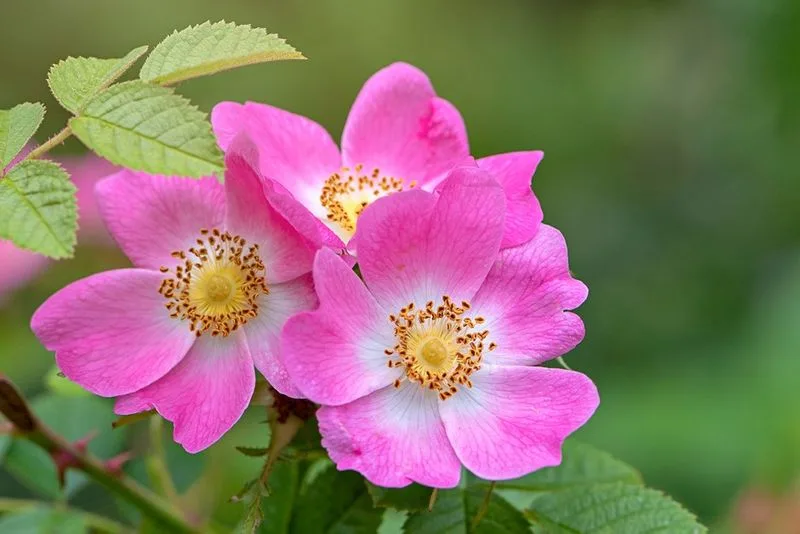
With their charmingly rugged appearance, wild roses effortlessly claim their space in overgrown gardens. Their thorny stems and vibrant blooms create a romantic, untamed look that complements any natural setting.
Wild roses are adaptable and resilient, thriving in poor soil and neglect. Their fragrant flowers attract pollinators, while their hips provide food for birds. To enhance their beauty, train them to climb fences or let them ramble freely. These roses not only offer visual appeal but also enrich your garden’s ecosystem, embodying the spirit of resilience.
Yarrow
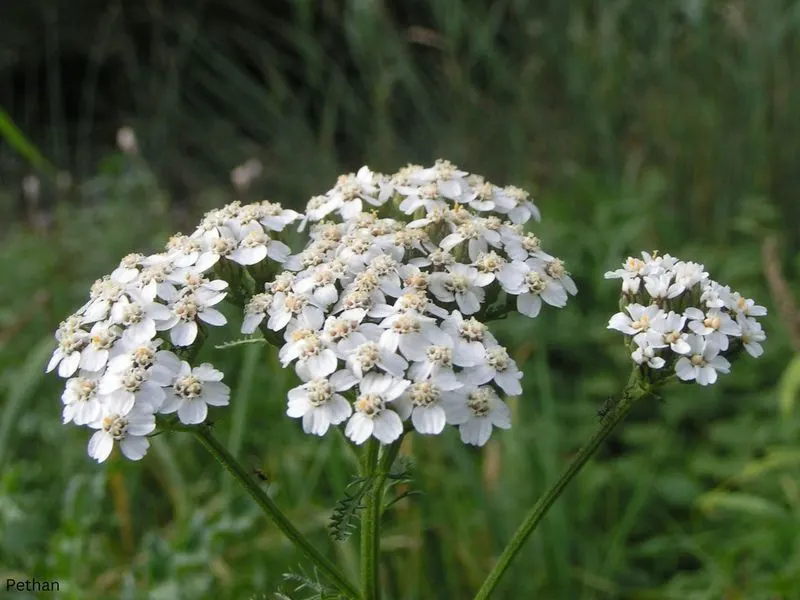
Yarrow, with its fern-like leaves and clusters of small, flat-topped flowers, adds a touch of elegance to untamed gardens. Available in hues of yellow, white, and pink, this perennial thrives in sunny locations and poor soil.
Its drought-resistant nature makes it a practical choice for low-maintenance areas. Yarrow’s stiff stems and long-lasting blooms are perfect for cutting gardens or wild meadows. This plant is prized for its medicinal properties, traditionally used for its healing qualities. It attracts beneficial insects, promoting a healthy garden ecosystem.
Bee Balm
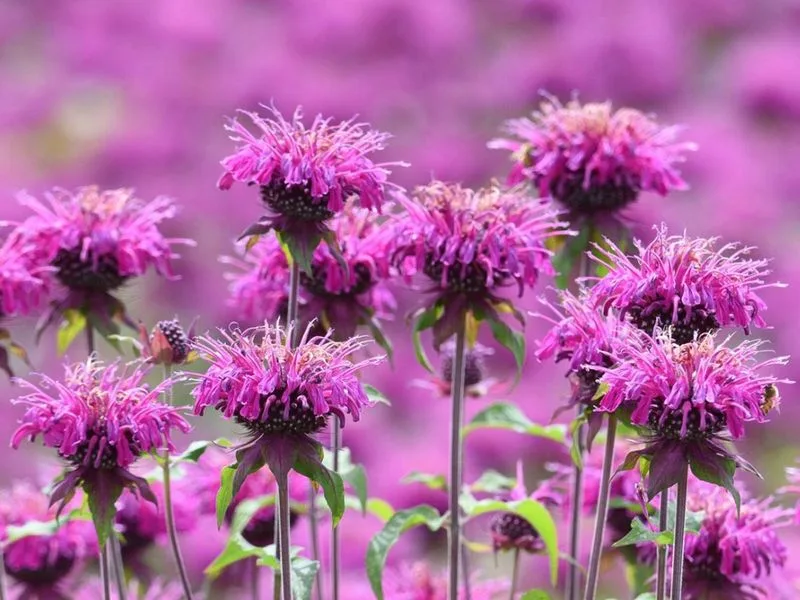
Bee balm, with its fiery red blooms and fringed petals, is a magnet for hummingbirds and bees. This lively perennial thrives in sunny spots with well-drained soil, making it an asset in an overgrown garden.
Its aromatic leaves can be used for teas, adding utility to its beauty. Bee balm’s wild, unkempt look complements informal garden styles, and it pairs well with other cottage garden favorites. Cut back after flowering to encourage new growth and maintain its vitality throughout the season.
Lamb’s Ear
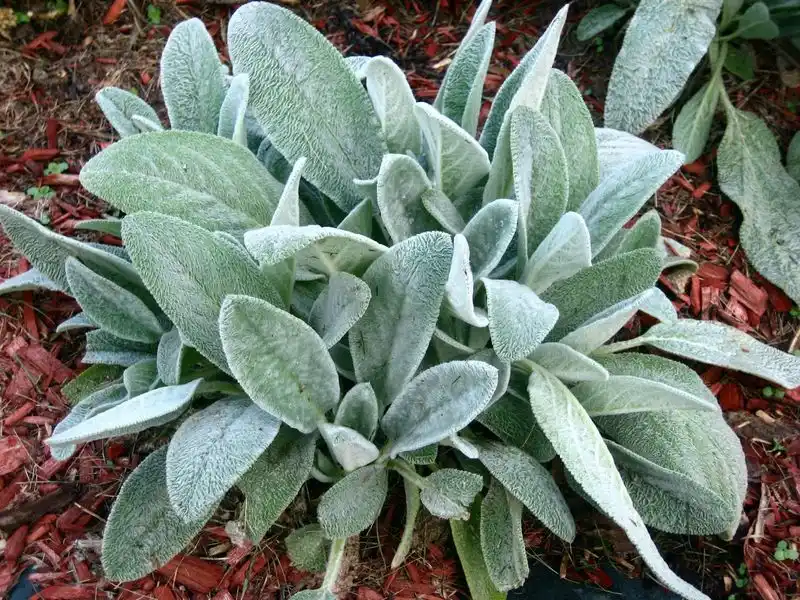
The velvety texture of Lamb’s Ear leaves creates a soft, silvery carpet in unruly garden beds. Their fuzzy appearance is both tactile and visually soothing, providing a subtle contrast to more vibrant plants.
Lamb’s Ear thrives in sunny, dry conditions and can tolerate poor soil, making it a robust choice for challenging spots. It’s often used as a ground cover or edging plant, defining paths and borders. While it does bloom with small purple flowers, the foliage is the true star, inviting touch and admiration as it softens harsh landscapes.
Japanese Anemones
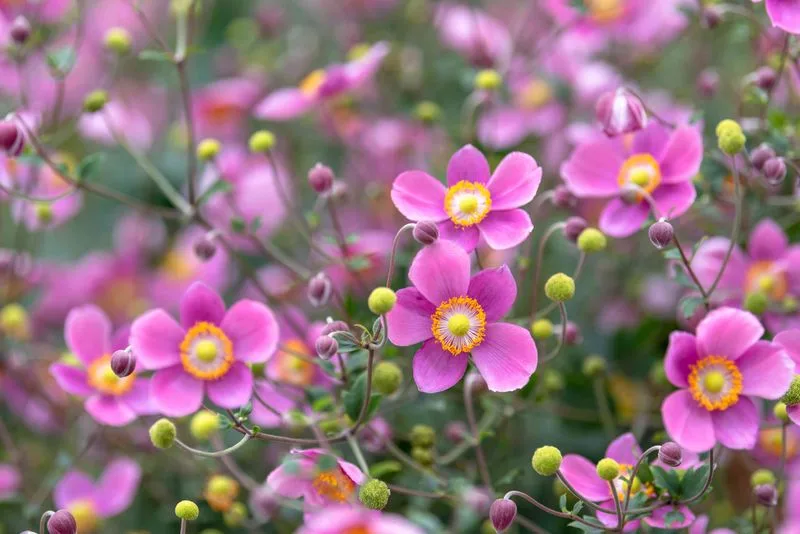
Japanese anemones bring a touch of grace to chaotic garden spaces. Their delicate, cup-shaped flowers in shades of pink and white dance on slender stems, swaying gently with the breeze.
These perennials thrive in partial shade and well-drained soil, making them perfect for brightening shady corners. Japanese anemones bloom late in the season, extending the floral display into autumn. Plant them in groups for a more substantial visual impact, and enjoy their understated elegance as they bring harmony to wild garden areas.
Foxgloves

Towering above the chaos, foxgloves bring an air of mystery and height to any crowded garden. Their tall spires are adorned with tubular, spotted flowers in hues of purple, pink, and white.
These biennials are shade-tolerant and prefer moist, well-drained soil, making them suitable for woodland settings. Foxgloves are a favorite among pollinators and add vertical interest to your garden design. Allow them to self-seed, and watch as they establish themselves, creating a natural tapestry of color and form.
Sedum
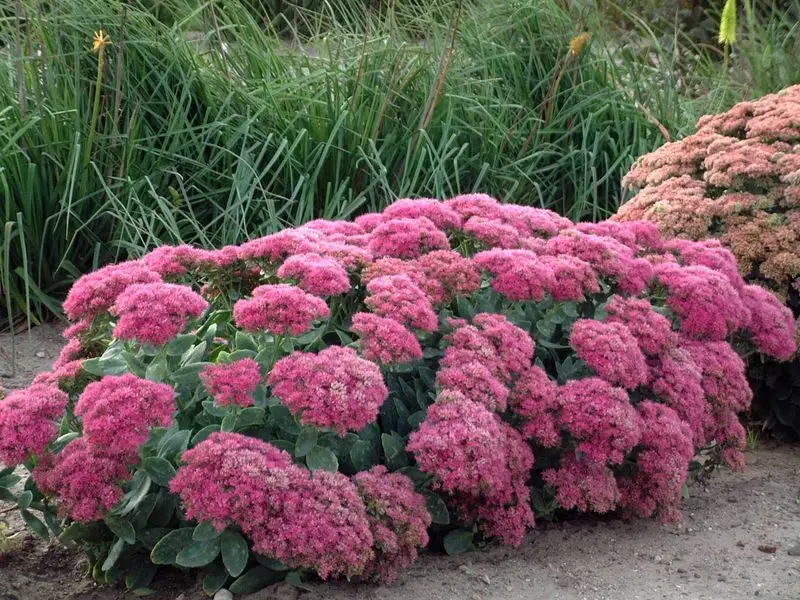
Sedum, with its fleshy leaves and clusters of pink or yellow flowers, is the perfect choice for problematic garden spots. These succulents thrive in dry, rocky areas, where other plants might struggle.
Their ability to store water makes them drought-resistant and low maintenance. Sedum’s star-shaped flowers attract butterflies, adding life to any garden. They work well in rock gardens, borders, or as ground cover, providing a year-round structure with their evergreen nature. Their bold textures and colors make sedum a standout in any landscape.
Clematis
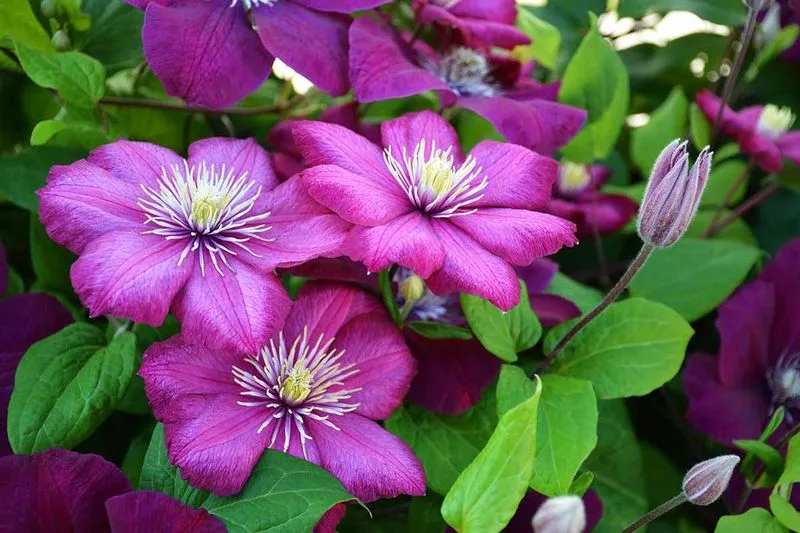
Clematis vines weave magic through overgrown gardens with their large, star-shaped flowers in various colors. Known as the “queen of climbers,” clematis adds vertical interest and romantic charm to any setting.
These climbers thrive in sunny positions with shaded roots, so plant them near walls or trellises where they can reach for the sky. With a little support, clematis will scramble over structures, providing a living curtain of blossoms. Their diverse range of colors and forms means there’s a clematis for every gardener’s taste and garden style.
Ferns
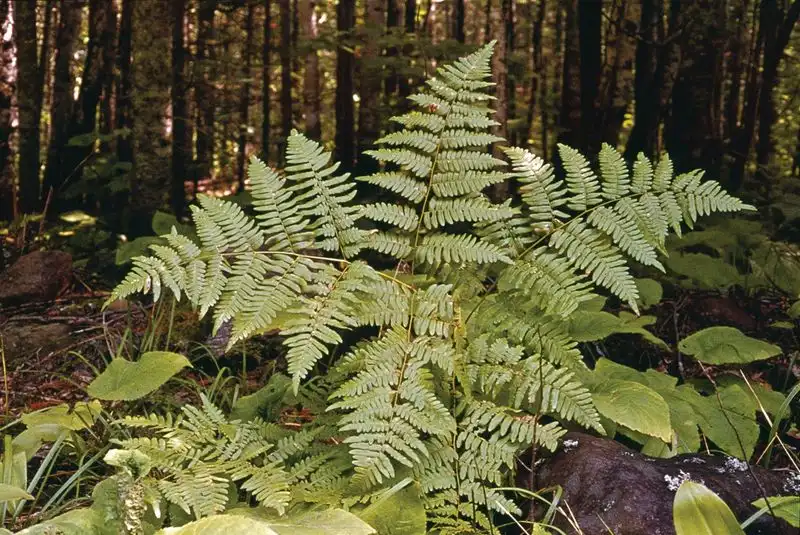
Ferns offer a touch of prehistoric elegance, with their intricate, feathery fronds unfurling in the dappled shade of an overgrown garden. These ancient plants thrive in moist, shady environments, making them ideal for woodland settings.
Their diverse forms and textures add depth and interest to garden designs, complementing both modern and traditional styles. Ferns are virtually maintenance-free, requiring little more than ample shade and consistent moisture. They create a lush, green backdrop that softens and unifies the exuberant chaos of a busy garden.
Wild Geraniums
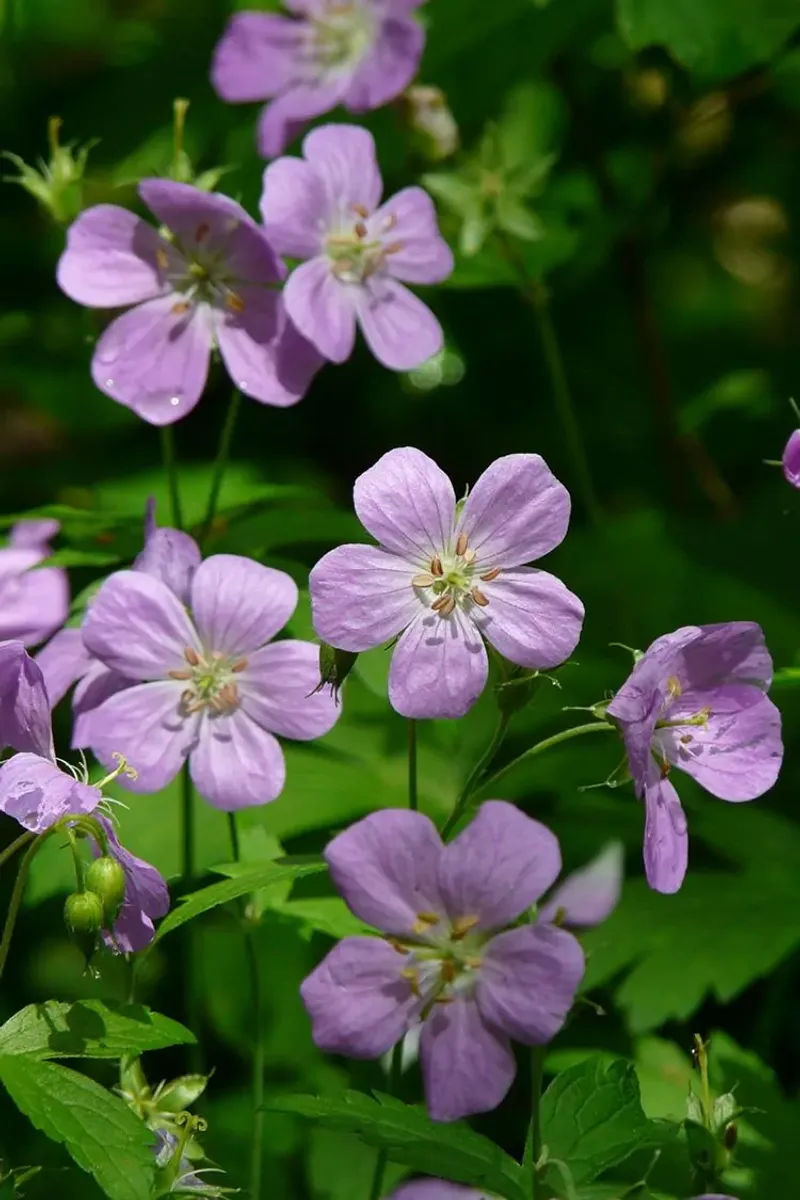
Wild geraniums, with their delicate pink and purple blooms, bring a splash of color to garden floors. These hardy perennials thrive in woodlands and shaded areas, spreading gently to create a floral carpet.
Known for their resilience, wild geraniums adapt to various soil types and require minimal care. Their charming blooms attract bees and butterflies, enhancing the ecological value of your garden. Perfect for edging paths or filling in gaps, these geraniums offer a natural, informal look, softening the rigid lines of garden structures.
Goldenrod
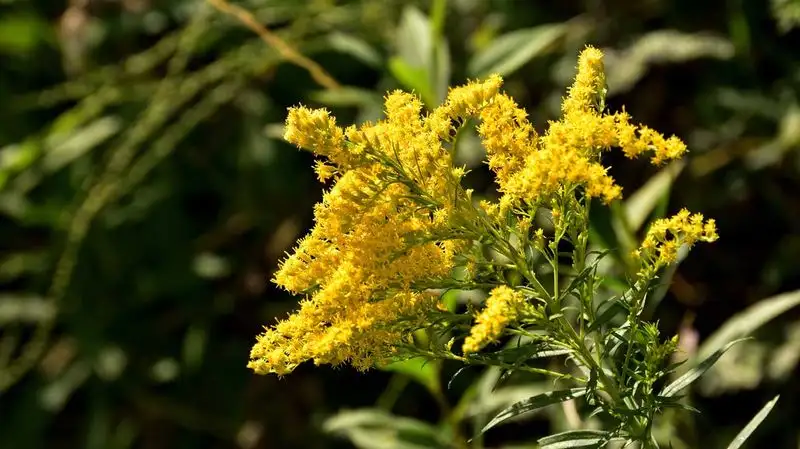
Goldenrod, often mistaken for ragweed, brings a burst of sunny yellow to untamed garden areas. Its tall, feathery plumes sway gently, catching the eye and adding movement to the garden.
This perennial thrives in full sun and well-drained soil, requiring little maintenance. Goldenrod is a vital food source for pollinators, playing an essential role in supporting local biodiversity. It pairs well with asters and grasses, creating a vibrant autumnal display that brightens up any landscape. Use goldenrod to fill gaps and add height to your planting scheme.
Hollyhocks
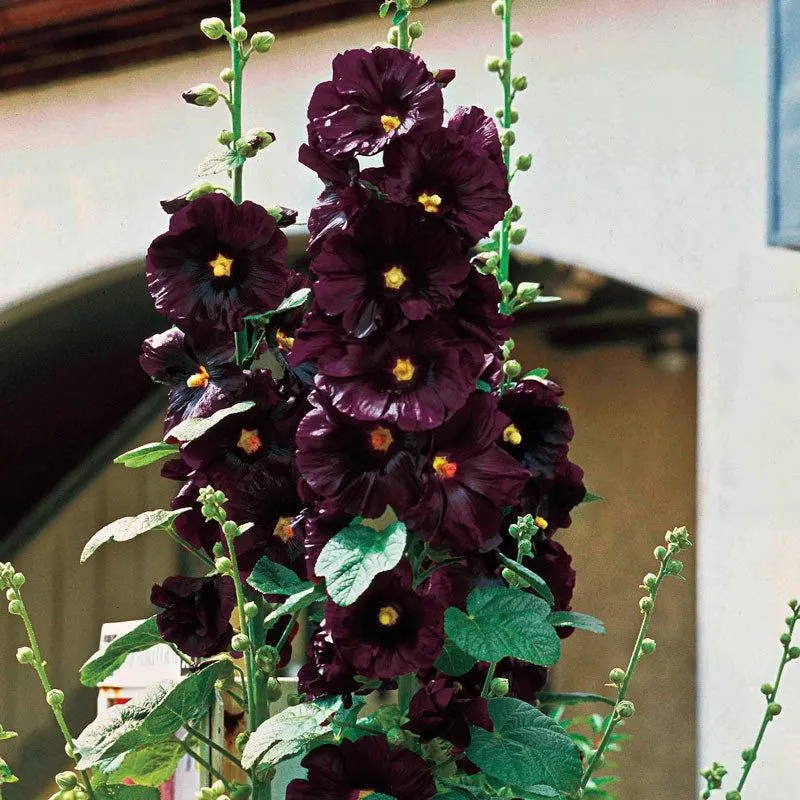
Hollyhocks stand tall and proud, with their towering spikes of flowers bringing drama and nostalgia to any garden. These biennials are perfect along fences or walls, where they can showcase their vibrant blooms in shades of pink, red, yellow, and white.
Hollyhocks prefer sunny spots and well-drained soil, thriving in cottage garden settings. Their tall stems attract bees and butterflies, adding life and movement to the garden. Allow them to self-seed, and enjoy their stately presence year after year, as they paint a vertical tapestry of color against the sky.
Russian Sage
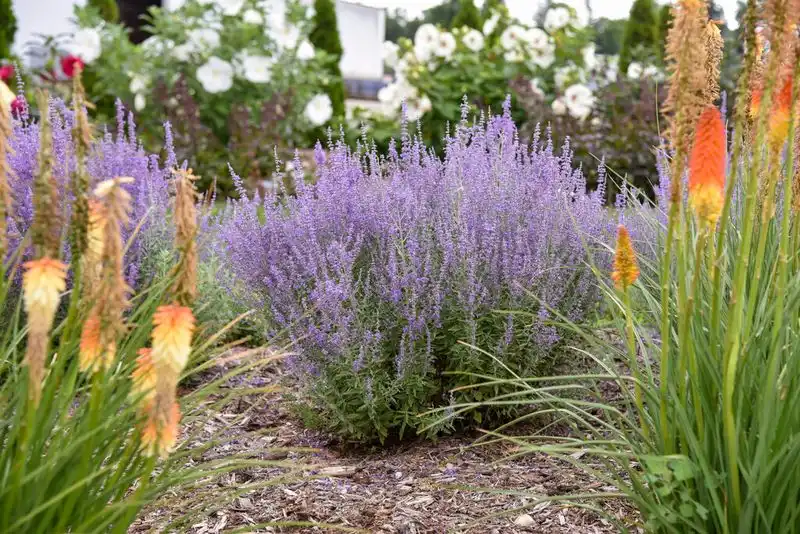
Russian sage, with its silvery leaves and airy spikes of lavender-blue flowers, brings a touch of elegance to overgrown gardens. This perennial thrives in sunny, dry conditions, making it a perfect choice for low-maintenance areas.
Its aromatic foliage and long-lasting blooms attract pollinators, enhancing the garden’s vitality. Russian sage pairs beautifully with grasses and other sun-loving perennials, creating a harmonious and textured landscape. Its delicate, wispy appearance softens harsh lines and adds a calming presence, ensuring it remains a garden favorite.
Astilbe
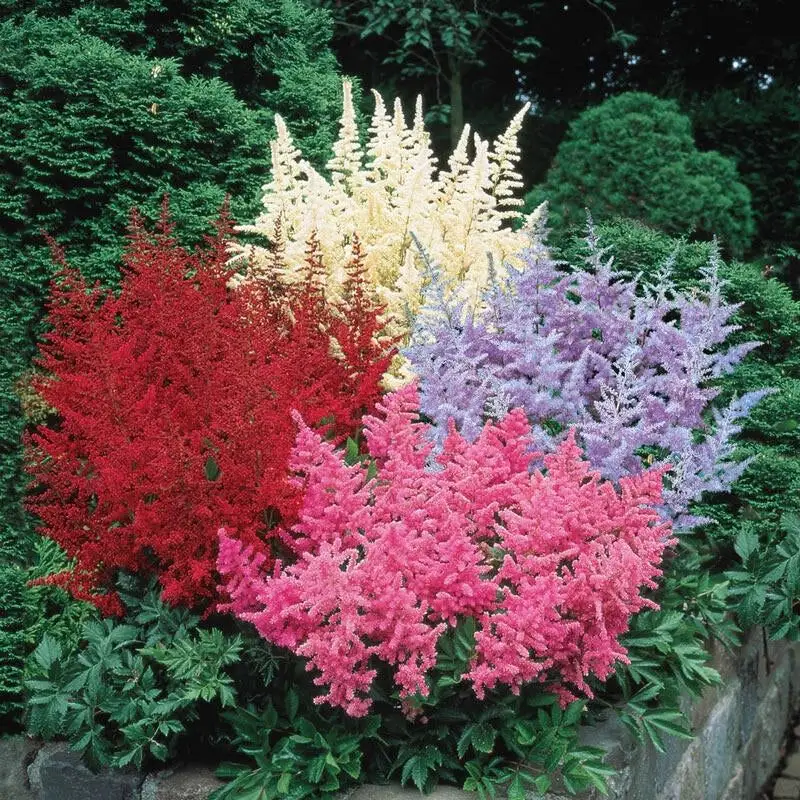
Astilbe, with its feathery plumes of pink, white, and red flowers, brings a touch of grace to shaded garden areas. These perennials thrive in moist, rich soil, lighting up dark corners with their vibrant colors.
Their fern-like foliage adds texture and depth, making astilbe a versatile choice for borders and shaded beds. Consider planting them en masse for a striking effect, or mix them with hostas and ferns for a woodland feel. Astilbe’s ability to thrive in shade makes it an invaluable addition to any garden lacking in sunlight.

